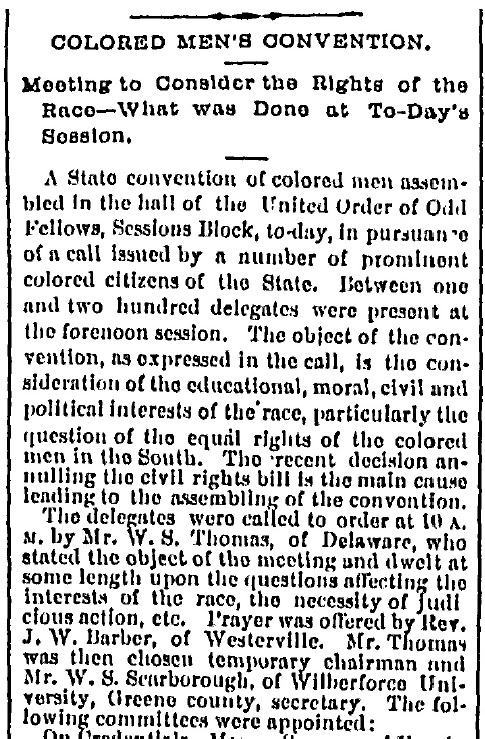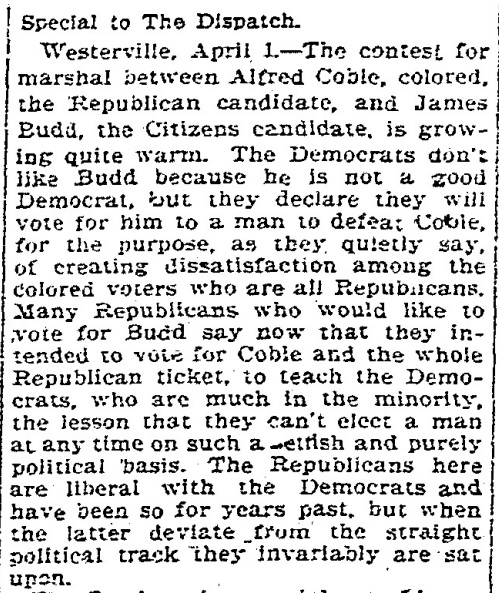Injustice & inequities spurred Black Westerville residents to politically organize after the Civil War.
In the late 1800s, a significant number of men in Westerville’s Black community joined forces to fight against the racial discrimination. One particular threat to equality came in October 1883, when the Supreme Court ruled that parts of the Civil Rights Act of 1875 were unconstitutional and that the federal government did not have the power to forbid racial discrimination by private businesses.
It was against this backdrop of racial animosity that Columbus hosted a state-wide Colored Convention in December 1883 to denounce egregious attacks on civil rights in Ohio (there were still a handful of Black laws on the books) and across the nation. Several Black men from Westerville participated. Wilson Henry Fields, a barber and restauranteur, served as a delegate. J. W. Barber, the local AME minister, offered the convention’s opening prayer. Walter S. Thomas was an orator, political activist, and clerk in the Ohio Senate who had spent part of his childhood in Westerville. As chairman, Thomas called the meeting to order.[1]
Definitions
Equal protection and treatment under the law for everyone, regardless of race or other characteristics like sex, age, religion, national origin, disability, etc.
Definition adapted from the Cornell Law School.
Black men in Westerville made sure to exercise their constitutional right to vote during a time when their newfound civil rights were in danger. A formerly enslaved laborer named Levi Williams, a laborer named John “Jack” Holliday, and a “full line of colored electors” voted in November 1880 at what was Blendon Township’s largest election to date. Some men, like Alfred Coble, Jr., even took it upon themselves to run for office (although a significant contingent of Westerville residents made their disapproval of Coble’s skin color quite clear).[2]
Westerville’s most influential Black politician was Joseph M. Williams, who the Columbus Dispatch described as the “leading colored politician of this vicinity.” He served as president of the Charles F. Galloway Club (a local African American political club), a delegate to a Republican county convention, president of a Prohibition club, and an officer in the Afro-American League. He also presided over a Republican rally at Westerville’s city hall in 1898, showing the amount of influence he had in Central Ohio politics.[3]
References
How to Cite This Source
Please cite this toolkit (Chicago Manual of Style) as 'Westerville History Museum, "Racism in Westerville History," Westerville Public Library, last modified January 23, 2023, https://westervillelibrary.org/racism-history.
Need a citation in a different style (such as MLA or APA)? Try this citation generator.






